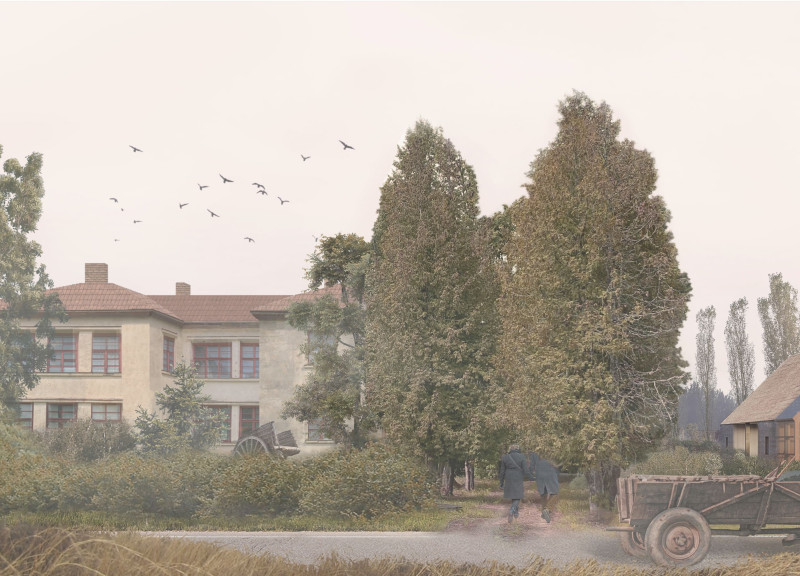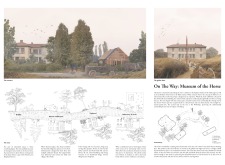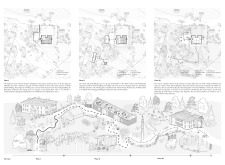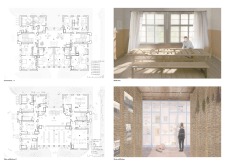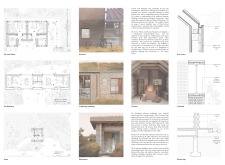5 key facts about this project
The design aims to create a museum dedicated to the forgotten heritage of the Valka region, with a specific focus on the cultural significance of the horse in Baltic history. Situated within a transformed landscape, the museum blends natural elements with historical narratives. The concept of oblivion invites visitors to reflect on how domestication and human intervention have shaped both the environment and the stories tied to it.
Entrance Experience
Visitors approach the museum through an entry framed by mature trees, offering a natural transition from the outside world. This entrance serves as a symbolic threshold, inviting exploration beyond the immediate surroundings. As guests traverse the fields and forests, they begin a journey that sets the stage for everything the museum has to offer.
Main Exhibition Space
The museum’s primary exhibition area is located inside the historic Omuli school building, which has been adapted for contemporary use while preserving its historical character. This design choice promotes a dialogue between past and present, allowing for a rich educational experience. The setup encourages guests to engage with various displays, deepening their understanding of local horse culture and its historical context.
The Workshop
Included in the design is The Workshop, a dedicated space that showcases traditional craftsmanship related to horses. Visitors can observe and participate in skills such as forgery and braiding. This interactive element reinforces the museum’s role as a learning environment, fostering connections to the techniques that have shaped the region’s heritage.
Material Considerations
The choice of materials reflects the traditions of the area. The reception area features a thatched roof, linking it to the local building practices of the past. Wooden columns provide support for different areas within the museum while connecting to the natural environment. These material choices emphasize the importance of craftsmanship and the project’s commitment to honoring local culture.
A path lined with historical artifacts guides visitors deeper into the exhibition area, where the stories of local breeds, including the Latvian Horse, are highlighted. Each element is thoughtfully arranged to enhance the storytelling experience, connecting visitors to the region’s rich history.


